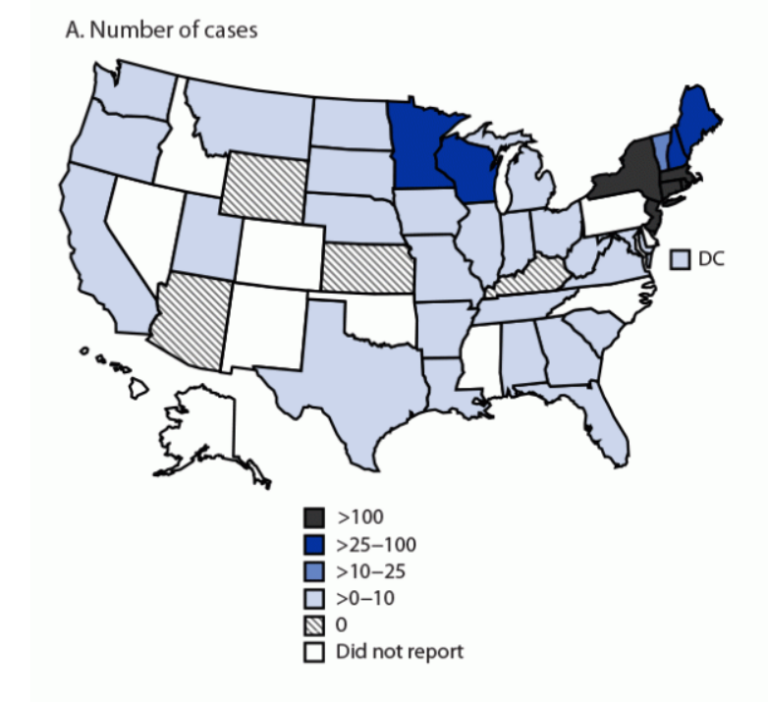Pennsylvania won't tell you if dangerous tick-borne disease is in your neighborhood
Tiny deer ticks, about the size of a poppy seed, have long been known for carrying the bacteria that causes Lyme disease.
And the ticks are to blame for a lesser-known illness that is spiking in states across Northeast. But, there are few reports of it in Pennsylvania. That doesn't mean residents are out of the woods from its dangers.
Unlike other states in the Northeast and elsewhere, state health officials aren't tracking babesiosis.
Babesiosis cases not counted in Pennsylvania
The Centers for Disease Control and Prevention reports babesiosis, caused by parasites the ticks also carry, is on the rise throughout New England, New York, New Jersey and Delaware.
Pennsylvania is the only Northeastern state where babesiosis cases do not have to be reported by doctors and hospitals to the state health department, which in turn can report them to the federal CDC.
The CDC reports that from 2016 to 2019, basesiosis cases have risen from 1,910 to 2,420 from reporting states but this doesn't include any data from Pennsylvania or other non-reporting states.
When a disease is not reportable, health officials don't have the data to see — or share — how many people have been infected with this illness.
Babesiosis can cause reactions ranging from mild symptoms to death.
The infection shares similarities with malaria and the two can often be confused in diagnosis, health experts say. Symptoms include headache, fever, vomiting and others often associated with viral illnesses. Some people can be asymptomatic, while others can have severe reactions, including, anemia, renal failure and acute respiratory distress.
Maggie Shuttlesworth, state health department spokesperson, explained the disease isn't on the mandatory reporting list, except in Philadelphia where that city's health agency requires it.
She said the state would like to see the data, though.

“The Pennsylvania Department of Health is interested in tracking and counting cases of this emerging pathogen and strongly encourages healthcare providers to voluntarily report cases when they are diagnosed. When the department receives a report of babesiosis, that case is investigated accordingly.”
The state health department is working to update regulations to include tick-borne diseases not already required to be reported, Shuttlesworth said.
Tick populations in the Northeast
The parasitic disease can be contracted through tick bites, but can also be transmitted through blood transfusions as well as congenitally from mother to child, so the impact can be great if someone does not know they have it. Persons with a weak immune system or other heath conditions can have more serious reactions.
Tick populations in the Northeast have been on the rise, so the Food and Drug Administration now recommends blood donation screening in 14 states including Delaware, New Jersey, New York and Pennsylvania. The CDC says the disease was first reported in 1969 at Nantucket, Mass., and has become endemic in several states.
Since case counts and rates have increased, “clinicians need to be aware of the signs and symptoms of and risk factors for babesiosis in their practice areas, particularly since other tick-borne conditions can have similar clinical manifestations, risk for disease acquisition and geographic distribution,” the report states.
The CDC notes that people who spend time outdoors should practice tick bite prevention by wearing long pants, avoiding underbrush and areas where grasses grow high and using tick repellents.
More information about tick prevention and tick-borne diseases in Pennsylvania can be found at https://www.health.pa.gov/topics/disease/Vectorborne%20Diseases/Pages/Tick%20Diseases.aspx
This article originally appeared on Bucks County Courier Times: CDC warns about babesiosis, tick-borne illness on rise in Northeast

